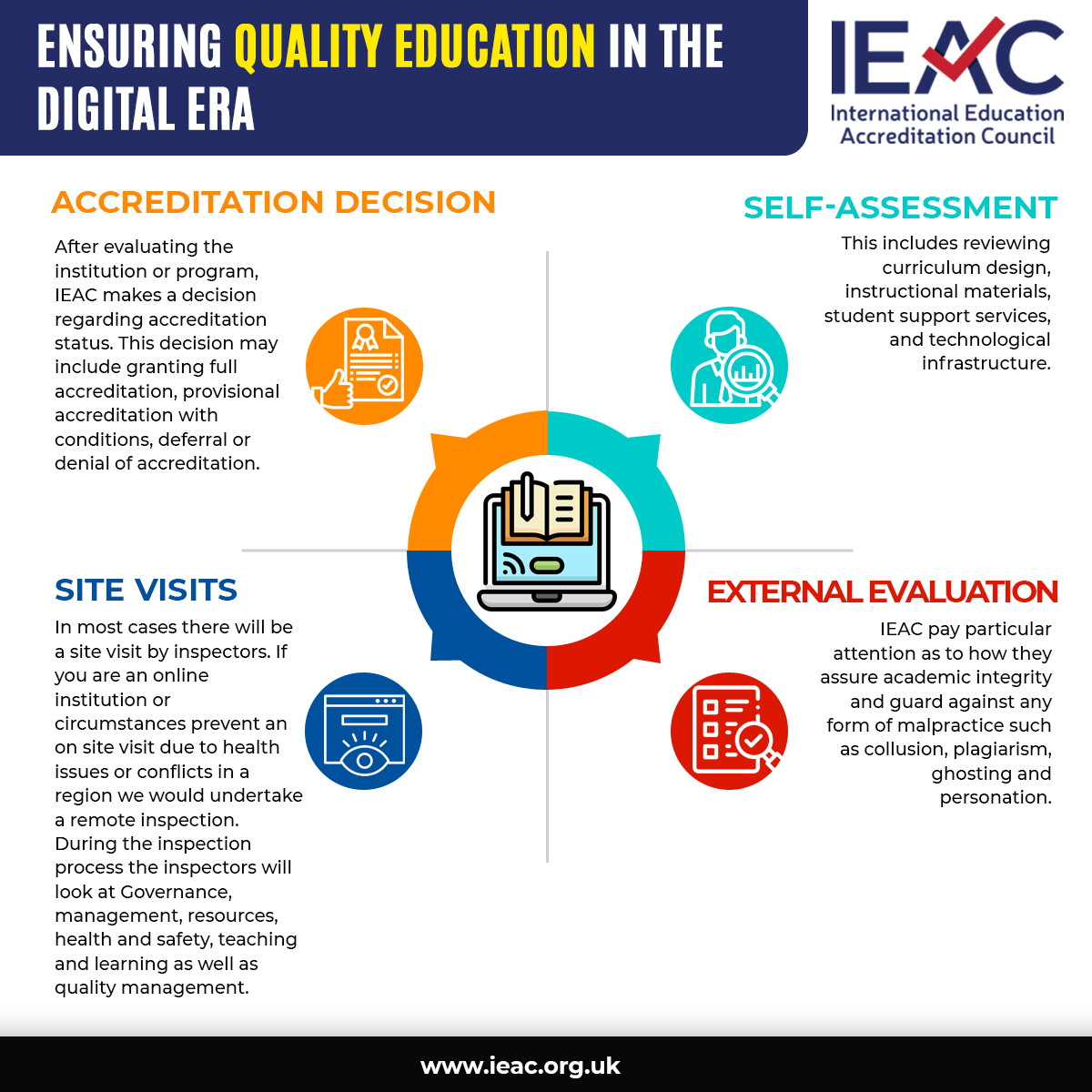- Home
- About IEAC
- Accreditation
- University Accreditation
- College Accreditation
- Online Institution Accreditation
- School Accreditation
- University Recruitment Agency Accreditation
- Programmatic Accreditation
- Teacher/ Lecturer Accreditation
- Religious Institutes Accreditation
- Affiliate Accreditation
- Research Accreditation Candidacy Accreditation
- IEAC Membership
- Institutions Accredited
- Accreditation Process
- Contact Us Webinar Apply Now
Inspection Process
Inspection
Lorem ipsum dolor sit amet, consectetur adipiscing elit, sed do eiusmod tempor incididunt ut labore et dolore magna aliqua. Quis ipsum suspendisse ultrices gravida. Risus commodo viverra maecenas accumsan lacus vel facilisis.
Inspection
This would normally be an onsite inspection unless it is prevented by health or conflict issues in the country. For Online Institutions this is mainly undertaken Remotely unless the institution prefers an On site visit.

Site Visit
As soon as the self-assessment is completed, and at a time which is convenient to the institution seeking accreditation, IEAC will conduct an on-site visit. During the visit, the inspector will set-up an evaluation team, which may include faculty members, administrators, and other subject matter experts, who will assess the institution's facilities, interview staff, faculty, and students, and observe classes in action. For Online institutions this may be done remotely.
ONLINE institutions – Remote Inspection
For online institutions, this will normally be a remote inspection unless the institutions would prefer a site visit, for instance if they are operating a hybrid system. The process is basically the same but we would require the institution to send in videos showing teaching taking place, access to the platform to view teaching and learning materials. We would also like to meet online a group of teachers and students. If this is not possible then we would provide questionnaires for the staff and students to complete.
First Day
On the first day of the school inspection process, the inspectors typically commence their visit meeting with the Head of the Institution and the Senior Leadership Team (SLT). After this, they will focus on the quality of management, student support, the premises and facilities, health and safety, and the available resources for the courses being delivered. The inspectors will also view procedural documentation, attendance recording systems, examples of marked student work, and feedback forms. In addition, they will look at the institution’s statutory documentation, such as approvals from the local Ministry of Education and adherence to local regulatory bodies that oversee issues such as Health & Safety, Fire Regulations, and Employment.
The key focus of educational institution inspection involves:
-
 Procedural documentation (quality manual, staff/student handbooks)
Procedural documentation (quality manual, staff/student handbooks) -
 Attendance monitoring systems
Attendance monitoring systems -
 Sample student feedback forms
Sample student feedback forms -
 Marked student assignments
Marked student assignments -
 Performance monitoring systems
Performance monitoring systems -
 Statutory documentation
Statutory documentation -
 Meetings with management and the Head of Institution
Meetings with management and the Head of Institution
Flow Chart Showing The Process From Initial Inquiry To Accreditation
Complete Online Application Form
After submitting your enquiry, you will be given log-in ID and a PasswordEvaluation of Application
After completing the Application Form online your IEAC Customer Service Manager (CSM) will contact you directly.Request for Documentation
The committee will review your application and determine what documentation is required.On-site or Online Inspection
Your IEAC CSM will liaise with you to organise your inspection.Decision for Accreditation
You will receive the final decision in about 2 weeks after the inspectionSecond Day
This stage of the Educational Accreditation Process revolves around reviewing collected evidence and assessing the institution's adherence to IEAC Accreditation Standards in Education. The inspector(s) will conduct a detailed audit of systems, observe teaching sessions, and engage in meetings with staff and students to gather their perspectives. The inspection format will be tailored to the institution's size, location, and type, aligning with their usual operation and timetable. The visit concludes with a final meeting with the Institution Head to provide informal feedback; however, the inspector(s) cannot officially declare the inspection outcome.
Inspection Activities:
-
 Meetings with the Head of Institution, CEO, and owners/Chair of Governors (if applicable)
Meetings with the Head of Institution, CEO, and owners/Chair of Governors (if applicable) -
 Introductory meeting with all staff (if possible)
Introductory meeting with all staff (if possible) -
 Tour of premises
Tour of premises -
 Survey of library/resource areas
Survey of library/resource areas -
 Assessment of research facilities and outputs
Assessment of research facilities and outputs -
 Evaluation of IT provision
Evaluation of IT provision -
 Examination of laboratory and audio-visual equipment
Examination of laboratory and audio-visual equipment -
 Visit to refreshment areas
Visit to refreshment areas -
 Meeting with a representative group of staff (without senior managers)
Meeting with a representative group of staff (without senior managers) -
 Observation of teaching, training, and work placement sessions
Observation of teaching, training, and work placement sessions -
 Meeting with representative group(s) of students (without staff present)
Meeting with representative group(s) of students (without staff present) -
 Final meeting with the Institution Head to provide an informal report of findings
Final meeting with the Institution Head to provide an informal report of findings




